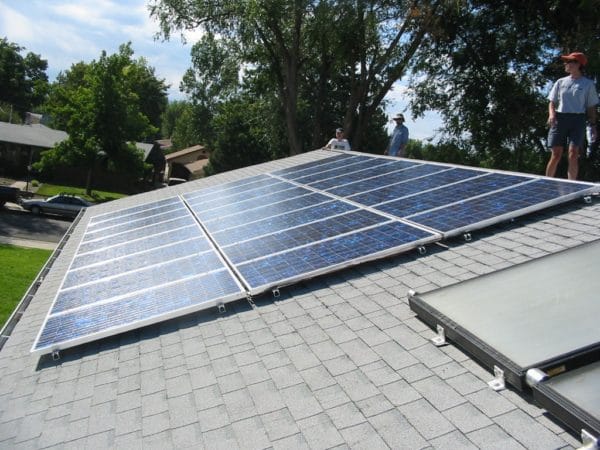Now that California gets over 22% of its electricity from solar, the state is again revising its compensation scheme for newly installed distributed solar.
Key parties in an ongoing rate proceeding, widely known as NEM 3.0, agree that new distributed solar should be compensated at lower rates than in the past. They disagree about what the new rates should be, with each party anchoring its proposal in a distinct philosophy.
Solar plus storage “will be the future of renewable distributed generation in California,” says a joint proposal from the national solar trade association Solar Energy Industries Association (SEIA) and the nonprofit Vote Solar.
(Read “Clean energy advocates are ready to do battle over California’s net energy metering program.”)
Distributed storage is “necessary” for California’s wildfire-prone grid, and will also help manage distribution circuits as loads increase due to electrification, said the California Solar & Storage Association (CALSSA). Because existing solar providers are best able to install distributed storage at scale, the group said, the state’s distributed solar industry must be preserved by compensating self-generators at attractive levels.
Meeting California’s greenhouse gas reduction goals through utility-scale renewables alone “is not a realistic scenario,” said CALSSA, saying that transmission siting will be “extremely difficult,” and that based on recent experience, new transmission will be “enormously expensive.”
The Public Advocates Office of the California Public Utilities Commission (CPUC) aims to benefit and “fairly compensate” homeowners who add solar based on the “actual value” of the energy, in a way that “supports electric service affordability for all customers.”
California’s dual mandate
California has a dual mandate for setting electricity rates for self-generators. State law AB 327 calls for these rates to balance the costs and benefits of self-generation, while ensuring that customer-sited renewable generation can grow sustainably.
To balance costs and benefits, SEIA and Vote Solar proposed reducing compensation for self-generation below current “NEM 2.0” rates. New residential self-generators who are served by two of the state’s three major utilities would be required to use existing untiered time-of-use rates designed to promote electrification. Because those rates are lowest during sunny hours, they would provide a “strong incentive” for new distributed generation customers to include storage, the groups say.

Image: NREL/Pete Beverly
CALSSA proposed a step-down of export credits below current retail rates for new residential self-generators, that would achieve a seven-year payback period. The group said its proposal would promote sustainable growth through a payback period “that customers find acceptable.”
The CPUC’s Public Advocates Office said that homeowners with new solar should be compensated at the utility’s avoided cost for their exported energy, through which they would “still receive a meaningful subsidy.” The office said that monthly bill savings would recover the system cost in 13-15 years, while solar panels retain 80% of their starting efficiency after 40 years, “so the system owner stands to accrue substantial long-term benefits.”
That office agreed with the proposals of a CPUC-commissioned white paper, which called for compensating export energy at avoided cost, adding “grid benefits charges” to cover distribution, transmission and public program costs, and gradually reducing export compensation from the current level. The office’s proposal would also provide storage incentives to existing self-generation customers.
CALSSA challenged that white paper’s analysis, saying it “unreasonably assumes the majority of utility costs are fixed,” and proposing alternative means to measure avoided costs, and to calculate the CPUC’s Ratepayer Impact Measure.
Both the SEIA/Vote Solar proposal and the CALSSA proposal would keep rates for new commercial distributed generation customers at NEM 2.0 levels.
The parties’ proposals are available in the California Public Utilities Commission docket for Proceeding R2008020.
This content is protected by copyright and may not be reused. If you want to cooperate with us and would like to reuse some of our content, please contact: editors@pv-magazine.com.








With the gain of being able to install 150% of ones current usage for future needs plus degradation, over time, of the output from solar panels NEM 3.0 sounds like they are looking forward. Once the price of battery storage comes down to a reasonable level and the life of the batteries is extended or replaceable batteries can just be pugged in, this could be the future of “on grid” plus “off grid” capability to end fossil fuels as the primary source of utility electricity.
“Talk is cheap! It’s action that counts.”
Just make the changes necessary to get the renewables to replace fossil fuels ASAP! Time is a’wasting!
The feds need to light a fire under the other states to get them to catch up! California is way ahead.